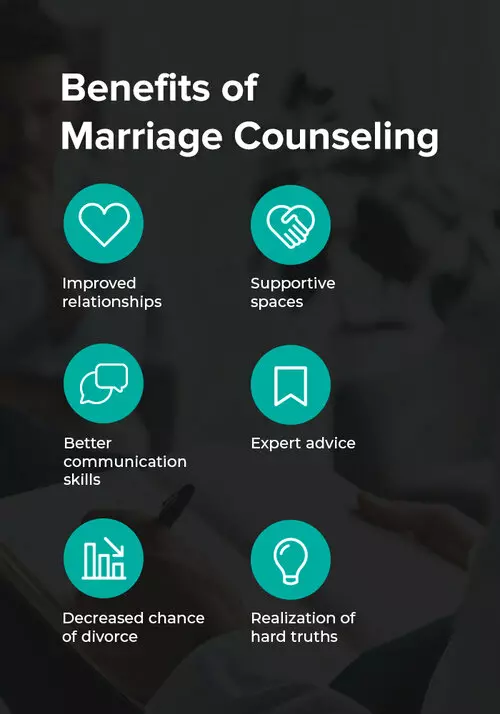The Only Guide for Aim Point Counseling
The Only Guide for Aim Point Counseling
Blog Article
Aim Point Counseling Things To Know Before You Get This
Table of ContentsThe smart Trick of Aim Point Counseling That Nobody is Talking AboutIndicators on Aim Point Counseling You Should KnowAim Point Counseling for DummiesTop Guidelines Of Aim Point CounselingSome Ideas on Aim Point Counseling You Should KnowThe Aim Point Counseling Ideas
The longitudinal design involves a pre-treatment study and 2 follow-up surveys at 3- and 12-months post-intervention. The study is set in 8 Relationships Australia Victoria centres, throughout metropolitan, outer suburbs, and regional/rural sites. Relationships Australia, a non-government organisation, is the biggest service provider of pair therapy and relationship services in Australia.
In Australia, the typical length of marriage prior to separation is 8.8 years, and around half of all separations involve couples with youngsters [1] These high rates of connection malfunction have actually been consistently associated with adverse health and wellness repercussions for both adults and youngsters following divorce/separation. These consist of isolation from support networks, and reduced income and criterion of living for both adults and kids [3], predicaments of loyalty over children for men, and clinical depression and loss of identity for women [4,5]
Examine This Report on Aim Point Counseling
Longitudinal studies likewise suggest that kids of separation have a greater occurrence of mental problems, alcohol and drug usage, and dangerous sexual behavior [7] Although the effects of divorce and splitting up can be destructive, study shows that high partnership dissonance in intact pairs is also most likely to have adverse results.
Variables that influence the end results of these solutions require comprehensive investigation. Research study to day has identified both pair and specific variables that might add to relationship discord. These include connection satisfaction and commitment at the pair degree, and clinical depression at the individual level. Nevertheless, durable research study to assess relationship-enhancing treatments in the community are limited.
Indicators on Aim Point Counseling You Should Know
Connection complete satisfaction has actually been the most usual end result variable recognized in greater than 200 assessments of pair counselling [11,12] Researches have located substantial renovations in partnership satisfaction from pre- to post-treatment [13,14] and over the course of one to two years following therapy [15] In these research studies, relationship satisfaction was most regularly analyzed utilizing the Dyadic Change Range (DAS) [16] While most researches indicate renovations in partnership fulfillment following couple coaching, they are limited by the examples and actions made use of, largely short-term follow-up time frameworks, and evaluations that do not account for the dyadic nature of couple information., is an additional frequently checked out partnership outcome.
To sum up, research study indicates that couple-specific variables along with individual variables may predict the results of pair counselling and partnership services. The causal direction of these relationships, nevertheless, is less clear. These monitorings are very important, given that, to validate and assist the application of partnership services such as couple counselling, empirical proof has to explore both the results of connection services and the elements that predict effective treatment.
, at the very least in some European countries.

We currently recognize little about the accounts of pairs that look for out connection education and learning compared with those who seek partnership counselling, or the end results of these programs. Unscientific evidence suggests that there might be substantial distress amongst at least some couples seeking partnership education and learning.
Unknown Facts About Aim Point Counseling
Comments includes individuals completing surveys about their connection (e.g. procedures of social troubles), and getting information on what their scores indicate. Cognitive-behavioural approaches advertise altering cognitions to promote favorable connections. These might include promoting sensible attributions/expectations around adverse partner behaviour [46] Lastly, in skills training, couples participate in talks or discussions on relationship abilities, and practise these during facilitator-led activities [ 45]
These meta-analyses highlight limitations in the current literary works on relationship education. This example account may not represent customers who usually present for relationship education.
Get This Report about Aim Point Counseling

Really little research study has actually taken a look at the relative benefits of pair therapy and relationship education and learning programs. As customers are most likely to self-select into these solution kinds, it is unclear whether particular connection distress accounts present to every solution kind, or indeed whether there is a communication in between offering profile, solution kind and result.
(https://gravatar.com/a1mpoint)
Hence, we have included a 12-month follow-up to assess longer-term fads and impacts. The research makes use of a number of standardized result steps given that some prior investigations have been criticised for their lack of standard assessment [50] Finally, using statistical evaluations that assume independence of information, such as t-tests, or ANOVAs, has actually prevailed in previous research studies [ 44,49]
We propose to make use of multi-level statistical modelling procedures that Visit Your URL control for the inter-dependence of couple information to evaluate any type of treatment impacts. The particular goals of the ECC research are to: 1. Map accounts of clients looking for neighborhood agency-based couple therapy vs. relationship enhancement programs in terms of socio-demographic and relationship signs (such as relationship satisfaction, relationship dedication, interpersonal troubles, and factors for participating in), along with wellness (such as depression, general wellness) and health service use (eg.
2. Identify whether pair coaching and partnership education and learning solutions improve three- and twelve-month results for partnership contentment, dedication, and clinical depression, making use of analytical analyses appropriate to pair information. 3. Establish the family member contributions of customer aspects (individual and pair) and therapy/education elements to results at 3- and 12-months, and to sustainability of results with time.
Aim Point Counseling - Questions
Multi-level modelling to identify pre-post differences, regulating for dyadic (pair) degree. To add to the literature evaluating the performance of community-based couple therapy. The outcomes will assist scientific decision-making in community-based relationship solution setups, and professional training. 3. To figure out the loved one contributions of client/couple and therapy aspects to end results at 3- and 12-months, and to sustainability of outcomes with time.
Report this page